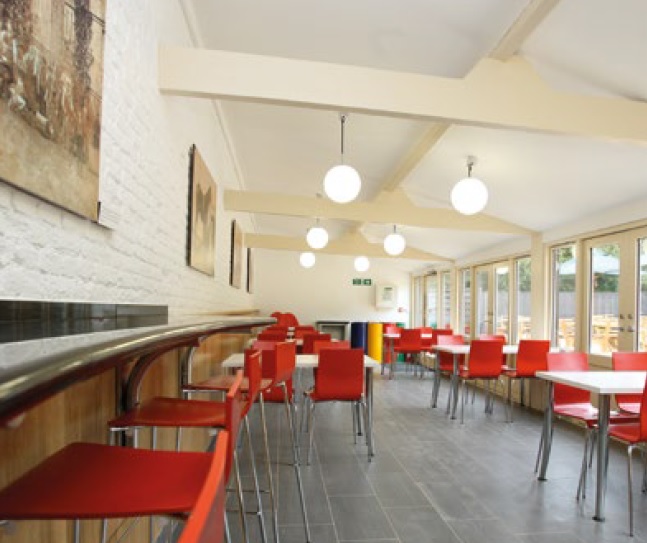The growth in heritage tourism

|
| There is no doubt that more people are visiting heritage buildings and sites in the UK than ever before. |
Contents |
[edit] Introduction
‘Heritage buildings’ are those older buildings which meet the Historic England (HE) definition of listed buildings [01] which are buildings of special historic or architectural interest generally. Historic England states that “all buildings built before 1700 which survive in anything like their original condition are likely to be listed, as are most buildings built between 1700 and 1850” [02]. In the UK, there are hundreds of such buildings. The Historic Houses Association (HAA) has 330 buildings [03], the National Trust (NT) over 500 [04] and English Heritage (EH) over 400 buildings, sites and monuments [05].
Evidence that heritage tourism is growing is compelling. In 2017/18, English Heritage sites had over 6.5 million visitors, an increase of 10% over the previous year [06]. These visitor numbers are dwarfed by the number of people visiting NT and HHA sites and buildings: the NT had 22.9 million visitors [07] and HHA had 26 million in 2017 [08]. Membership of all three bodies has also risen. NT currently has over 4.9 million members in England, an increase of 8% since the previous year. In 2018, there were 1,138,000 members of EH, an increase of 5% over the previous year. HHA membership increased by 2.5% between 2017 and 2018 to 51,990 members [09].
What is driving this increase in heritage tourism? It may be, we have become more interested in the history of sites and buildings – although here in the UK, there has been an established love of old buildings for over a century. For example, the Society for the Protection of Ancient Buildings’ (SPAB) manifesto to protect old buildings was written by William Morris in 1877 [10], and the National Trust formed in 1885.
While the UK’s love of old buildings may be long-held, the past 20 years has seen the public’s interest piqued by recent innovations in technology that have enabled further and deeper understanding of a building’s history. Survey techniques have improved and virtual reality and drones can provide images never seen before. For example, EH has been using virtual reality since 2017 at St Augustine’s Abbey [11]. Display areas are provided to share knowledge with visitors, and exhibits have become more hands on. This brings the history of the place to life – most likely enabling people to get more from their visit and go on to visit new places.
There is now much increased website presence and marketing of historic properties. This helps bring not only home-grown visits but also overseas visitors. The HAA reports that 81% of inbound UK tourists state that visiting historic houses and castles is the reason they come to the UK [12]. The Tower of London had 2,842,970 visitors in 2017 which made it the most visited attraction, closely followed by Stonehenge (5th), St Paul’s Cathedral (6th) and Westminster Abbey (7th) [13] with more historic places in the top ten.
Visitors can now enjoy more facilities too. There has been a trend to improve the visitor experience by providing WC facilities, cafes and play areas to make a visit much more family friendly: children can use the park while the older generation can use the cafe. Events are also planned on specific days such as the Festival of History or St. George’s Day, which are annual events at Wrest Park. This has been seen while working on projects to provide new café and play areas at Wrest Park in Bedfordshire and Audley End, Essex – both owned by EH. More information on these projects can be found at rhpartnership.co.uk/.
Is it good for the buildings and site to have lots of visitors? The obvious positive is the additional income that comes with visitors from paying the entrance fee and buying food or souvenirs. This money can be invested back into looking after the property and the grounds: a considerable boost to funding. These visits can also inspire the next generation and pass on valuable knowledge: EH reports that in “2017/18, more than 304,000 schoolchildren explored our sites” [14]. It also provides employment. Historic Scotland reports that “60,000 jobs – 2.5% of Scotland’s total employment” [15] is from their historic sites, while HE reports that heritage is an important employer in England, with a job total over 459,000 [16]. There are also many volunteer positions, over 3,000 for EH alone.
The negative side is the intrusive nature of a new cafe or car park on the site, and wear and tear from visitors. The maintenance of the site and property increases with more visitors; for example, paths need re-surfacing and night-time lighting, floors wear out and staff need to be provided to support the visitors. This has a considerable impact on a site and needs to be carefully considered and managed so as not to be detrimental to the site’s overall character.
On balance, it is far better that these properties are visited and used, but crucially in a managed and considerate way. The positive impact on the economy, knowledge being passed on to future generations, and the general sense of well-being from visiting these sites is hugely beneficial. Let’s look forward to our next visit to a historic site.
[edit] Find out more
To find out more about the Accredited Conservationist Scheme and how to qualify, please click HERE.
[edit] Notes
- 01 378,360 listed buildings in total in England as noted in historicengland.org.uk/content/heritage-counts/pub/2018/hc2018-heritage-indicators/
- 02 historicengland.org.uk/listing/what-is-designation/listed-buildings/
- 03 historichouses.org/
- 04 nt.global.ssl.fastly.net/documents/annual-report-201718.pdf
- 05 english-heritage.org.uk/
- 06 english-heritage.org.uk/siteassets/home/about-us/annual-reports/eh-annual-report-2018_-web.pdf
- 07 english-heritage.org.uk/siteassets/home/about-us/annual-reports/eh-annual-report-2018_-web.pdf
- 08 historicengland.org.uk/content/heritage-counts/pub/2018/hc2018-heritage-indicators/
- 09 historicengland.org.uk/content/heritage-counts/pub/2018/hc2018-heritage-indicators/
- 10 spab.org.uk/about-us/spab-manifesto
- 11 english-heritage.org.uk/about-us/search-news/new-virtual-tour-of-St-Augustines-Abbey/
- 12 historichouses.org/uploads/assets/uploaded/1541fa21-8b45-41b7-b9f9a591a1d16b27.pdf
- 13 visitbritain.org/annual-survey-visits-visitor-attractions-latest-results
- 14 english-heritage.org.uk/siteassets/home/about-us/annual-reports/eh-annual-report-2018_-web.pdf
- 15 historicenvironment.scot/about-us/who-we-are/why-is-the-historic-environment-important/
- 16 historicengland.org.uk/content/heritage-counts/pub/2018/heritage-and-the-economy-2018/
[edit] About this article
This article was written by Toni Page MCIAT, a CIAT-accredited conservationist. It was previously published in CIAT’s AT Journal, Issue No 130, Summer 2019 and can be accessed HERE.
More articles by CIAT on Designing Buildings Wiki can be accessed HERE.
[edit] Related articles on Designing Buildings Wiki
- Archaeology.
- Building pathology.
- Building survey.
- Conservation area.
- Conservation officer.
- Designated areas.
- Historic environment.
- Licensing.
- Listed buildings.
- Parthenon.
- Planning permission.
- Principles of conservation.
- Renovation.
- Restoration.
- Scheduled monuments.
- Sites of Special Scientific Interest.
- Structure relocation.
- Tree preservation order.
[edit] External references
--CIAT
IHBC NewsBlog
Old Sarum fire in listed (& disputed) WW1 Hangar - Wiltshire Council has sought legal advice after fire engulfed a listed First World War hangar that was embroiled in a lengthy planning dispute.
UK Antarctic Heritage Trust launches ‘Virtual Visit’ website area
The Trust calls on people to 'Immerse yourself in our heritage – Making Antarctica Accessible'
Southend Council pledge to force Kursaal owners to maintain building
The Council has pledged to use ‘every tool in the toolbox’ if urgent repairs are not carried out.
HE’s Research Magazine publishes a major study of the heritage of England’s suburbs
The article traces the long evolution of an internal programme to research 200 years of suburban growth
IHBC Context 183 Wellbeing and Heritage published
The issue explores issues at the intersection of heritage and wellbeing.
SAVE celebrates 50 years of campaigning 1975-2025
SAVE Britain’s Heritage has announced events across the country to celebrate bringing new life to remarkable buildings.
IHBC Annual School 2025 - Shrewsbury 12-14 June
Themed Heritage in Context – Value: Plan: Change, join in-person or online.
200th Anniversary Celebration of the Modern Railway Planned
The Stockton & Darlington Railway opened on September 27, 1825.
Competence Framework Launched for Sustainability in the Built Environment
The Construction Industry Council (CIC) and the Edge have jointly published the framework.
Historic England Launches Wellbeing Strategy for Heritage
Whether through visiting, volunteering, learning or creative practice, engaging with heritage can strengthen confidence, resilience, hope and social connections.















